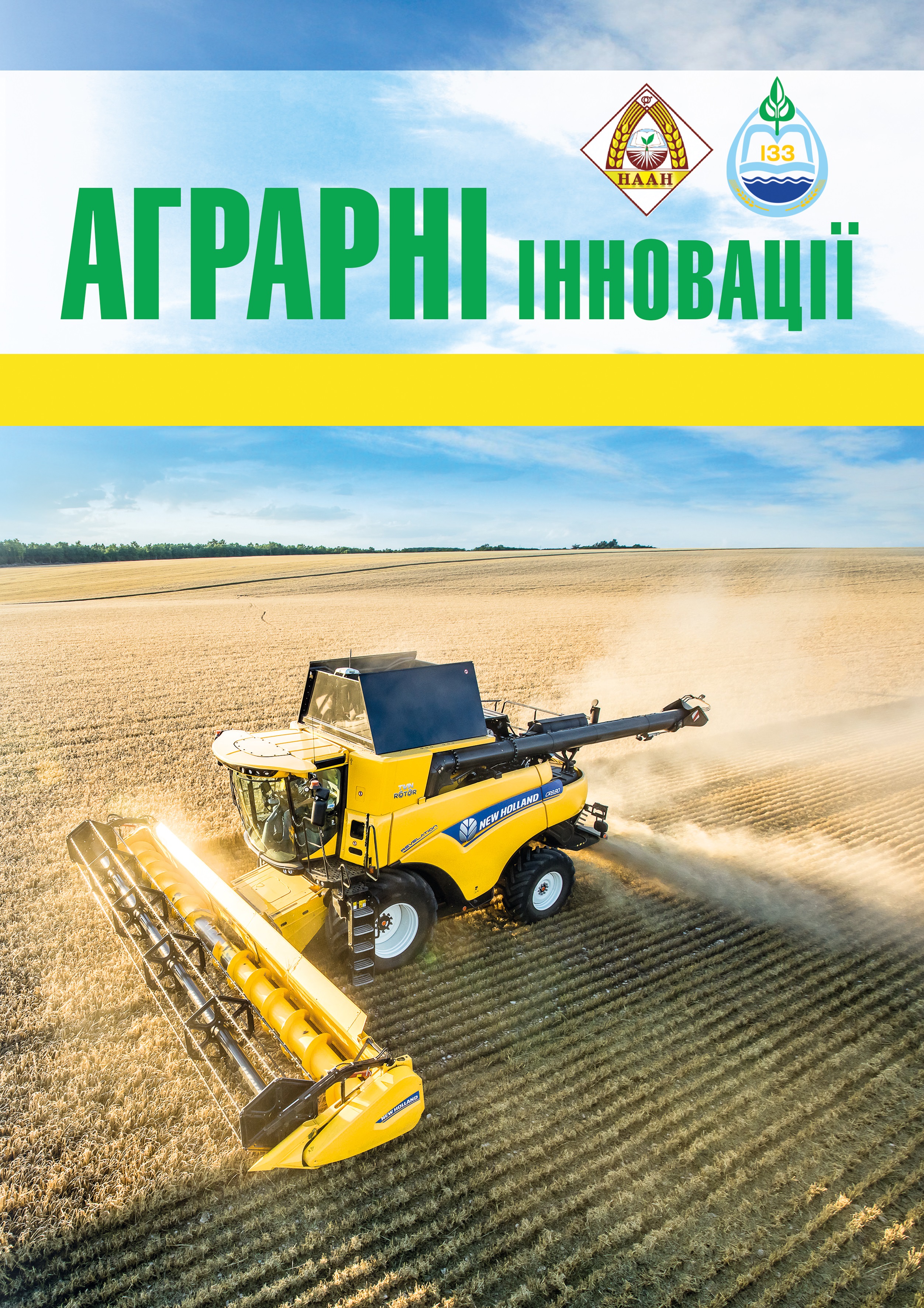WATER CONSUMPTION OF WINTER WHEAT
Abstract
An important element in shaping the irrigation regime of crops is the total water consumption or the amount of water that plants need during the growing season to obtain the planned harvest in specific natural conditions while optimizing all technological processes. They consist of water consumption for transpiration of plants, evaporation rom the soil surface and the formation of biological mass. Goal. Establish indicators of total and average daily evap-oration of winter wheat under irrigation in different weather conditions. Methods: field, systems analysis, analytical, experimental, in-house, modeling, laboratory, mathematical and statistical. Conclusions. In general, for the vegetation of winter wheat, taking into account the winter period, the field of this crop during irrigation consumes an average of about 5.2 thousand cubic meters of water. Analysis of data on the use of moisture from different soil layers by winter wheat indicates that in the autumn growing season, as well as dur-ing the wintering of plants, there is a replenishment of water reserves in the deep layers. During the spring-summer veg-etation, on the contrary, the indicators of total water con-sumption in these layers increase. Such data indicate that in spring and summer the plants use water mainly from a meter layer of soil. Therefore, all calculations for the total evapo-ration of plants is better to take into account the indicators in the soil layer 0–100 centimeters. Comparison of the total water consumption of the winter wheat field and the amount of precipitation for the period from germination to full ripeness of the grain allows to establish the deficit of moisture, which must be compensated by vegetative irrigation. According to our data, based on the indicators of moisture consumption from a meter layer of soil, it is 1747 m3/ha. On average over the years of research, the irrigation rate in this experiment was 1380 m3/ha.
References
2. Нетіс І.Т. Озима пшениця в зоні Степу. Херсон : Айлант, 2004. 95 с.
3. Животков Л.О., Бірюков С.В., Бабаянць Л.Т. та ін. Озимі зернові культури / за ред. Л.О. Животкова і С.В. Бірюкова. Київ : Урожай, 1993. 288 с.
4. Лапченков Г.Я., Николаенко А.Ф., КорпанВ.С. Влияние послепосевного и вегетационных поли-вов на урожай озимой пшеницы. Зерновые и кормовые культуры на орошаемых землях. Кишинев : Штиница, 1972. С. 39–42.
5. Латифов Н.Л., Кобозев И.В., Парахин Н.В. Оптимизация режимов орошения сельскохозяй-ственных культур. Москва : МСХА, 1996. 94 с.
6. Собко А.А. Озимая пшеница на орошаемых зем-лях. Киев : Урожай, 1976. 128 с.
7. Справочная книга по орошаемому земледелию /общая ред. Погребняк А.П., Калашников К.Г. Кишинев : Картя Молдовеняскэ, 1990. 134 с.
8. Федорченко М.Ф., Лисогоров С.Д., Фесенко Г.П. Вплив режиму зрошення і сортового складу на врожайність озимої пшениці. Зрошуване земле- робство : міжвід. тем. наук. зб. Київ : Урожай, 1982. Вип. 27. С. 21–23.
9. Хафизов А.Ш. Из опыта орошения озимой пше-ницы в Алма-Атинской области. Гидротехника и мелио-рация. 1968. № 11. С. 93–87.
10. Ярмизин Д.В., Лысогоров С.Д., Балан А.Г. Мелиоративное земледелие. Москва : Колос, 1966. 424 с.






